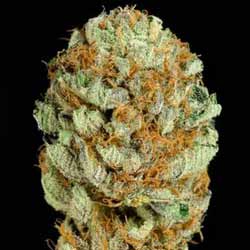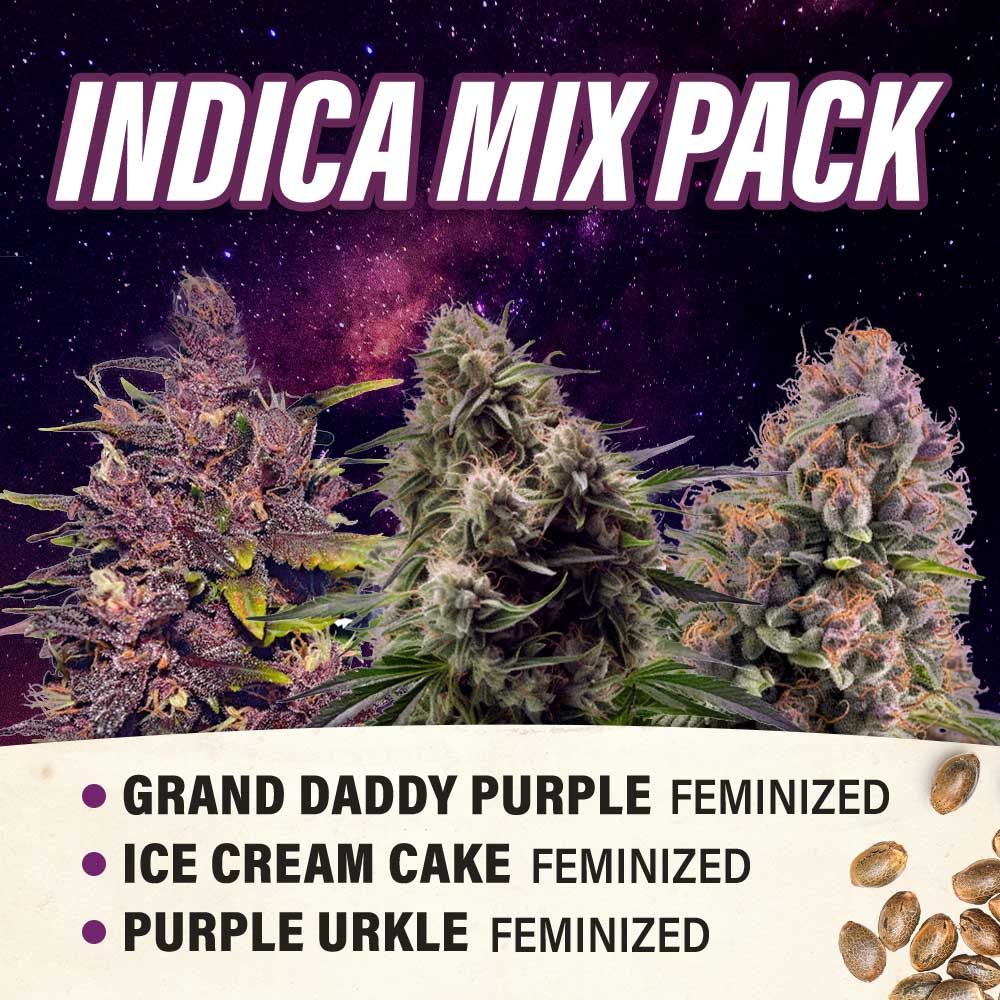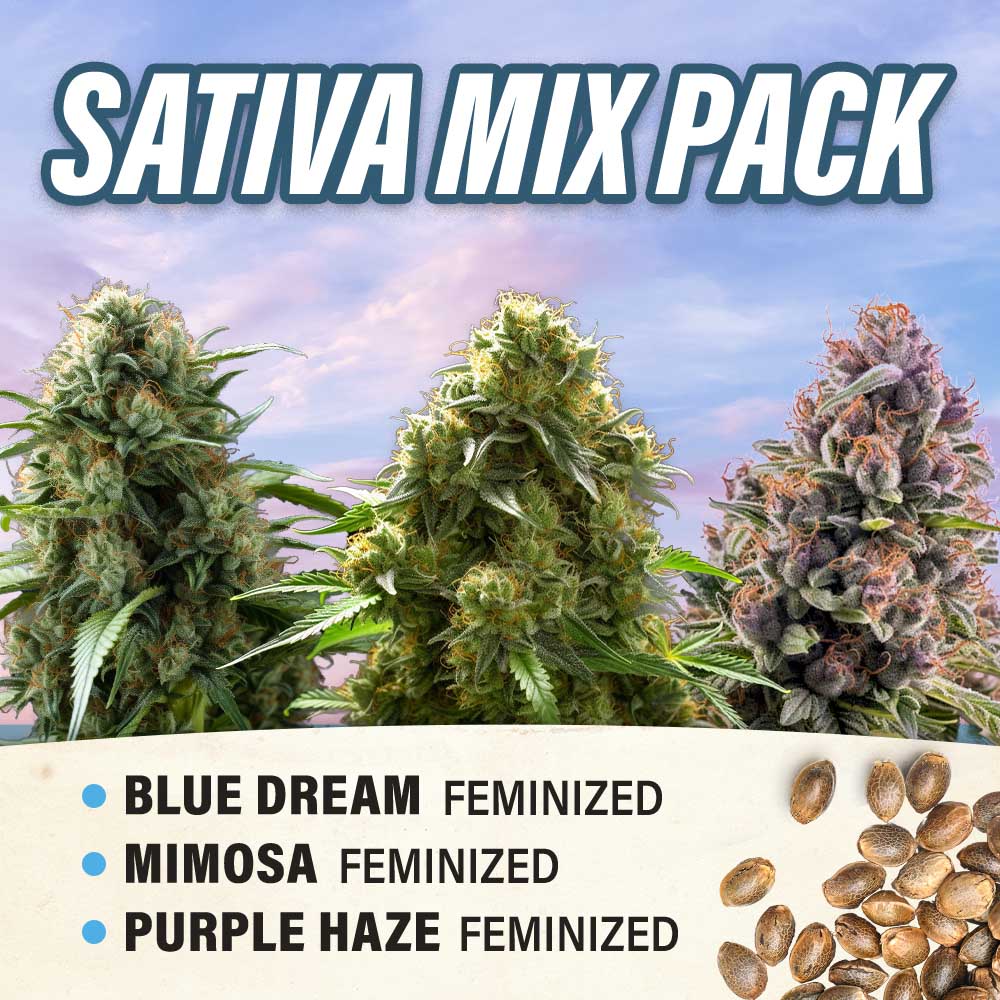Cannabis Deficiency Chart: 12 Essential Weed Plant Nutrients
Cannabis plants require a balanced intake of essential nutrients to thrive throughout their life cycle. When these nutrients are lacking or improperly absorbed, various cannabis deficiencies can emerge, affecting plant health, growth, and yield. This guide highlights the most common nutrient deficiencies in cannabis cultivation and their visible symptoms.
Table of Contents
What is Cannabis Deficiency?
Cannabis deficiency refers to a lack or imbalance of essential nutrients required for healthy growth and development of cannabis plants. These deficiencies can affect both macro and micronutrients, leading to visible symptoms such as yellowing leaves, stunted growth, weak stems, and poor overall plant structure.
If left unaddressed, cannabis nutrient deficiencies can severely impact nutrient uptake, flowering, and final yields. Identifying deficiency symptoms early is key to maintaining plant health and ensuring optimal results during both the vegetative and flowering stages.
How to Identify Nutrient Deficiency in a Cannabis Plant
Identifying nutrient deficiencies in cannabis plants early can prevent long-term damage and promote healthy growth. Visual symptoms on leaves, stems, and overall plant structure often provide the first clues.
Yellowing Leaves (Chlorosis)
One of the most common early signs of nutrient deficiencies is yellowing leaves. This usually indicates issues with nitrogen, iron, or sulfur availability. If younger leaves are affected first, it often points to iron deficiency, while older leaves suggest nitrogen loss.
Leaf Tips and Margins Turning Brown or Crispy
Burnt or curling leaf tips and edges often result from potassium deficiency or nutrient imbalances. These symptoms may also occur due to excessive nutrient buildup or pH imbalances affecting root uptake.
Dark Green or Purpling Leaves
Overly dark green leaves can signal nitrogen toxicity, while purple stems or veins may indicate phosphorus or magnesium deficiency. Such symptoms often appear during vegetative growth or early flowering stages.
Stunted Growth and Weak Stems
Slow or halted plant growth, along with thin or brittle stems, typically signal a deficiency in calcium, boron, or silicon. These nutrients are essential for cell wall strength, overall plant structure, and root development.
Interveinal Yellowing or Veins Remain Green
When leaf veins remain green while surrounding tissue turns yellow, it may point to magnesium or manganese deficiency. This symptom, common in cannabis cultivation, is especially noticeable on older fan leaves.
Deformed or Discolored New Growth
New leaves that appear twisted, crinkled, or discolored often suggest micronutrient issues such as zinc, copper, or boron deficiency. These symptoms typically affect the plant’s newest and most sensitive growth areas.
Reduced Yields and Flowering Issues
Poor bud formation, small flowers, or delayed flowering often result from long-term deficiencies in phosphorus, potassium, or sulfur. These nutrients play a critical role in energy transfer and flower development.
Cannabis Deficiency Chart
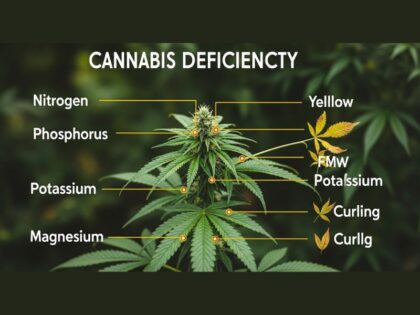
Understanding the key nutrients essential for cannabis cultivation is vital for maintaining healthy growth, maximizing yields, and avoiding common cannabis deficiencies. Below is a concise cannabis deficiency chart highlighting the most important nutrients, their roles, and symptoms of deficiency.
|
Nutrient |
Type | Function in Plant Growth |
Deficiency Symptoms |
|
Nitrogen (N) |
Macronutrient | Vital for chlorophyll production, leafy growth, and vegetative stage |
Yellowing of older leaves, stunted growth, reduced vigor |
|
Phosphorus (P) |
Macronutrient | Essential for root growth, flowering, and energy transfer |
Dark green or purpling leaves, weak root development, delayed flowering |
|
Potassium (K) |
Macronutrient | Supports water regulation, bud development, and disease resistance |
Brown leaf edges, curled leaf tips, weak stems, reduced yields |
|
Calcium (Ca) |
Secondary Nutrient | Strengthens cell walls, improves root health and plant structure |
Crinkled new growth, weak stems, dead spots on leaves |
|
Magnesium (Mg) |
Secondary Nutrient | Central to chlorophyll production and enzyme activation |
Yellowing between veins (interveinal chlorosis), older leaves affected first |
|
Sulfur (S) |
Secondary Nutrient | Aids protein synthesis and root development |
Uniform yellowing of young leaves, slow growth, poor plant structure |
|
Iron (Fe) |
Micronutrient | Crucial for chlorophyll synthesis and respiration |
Yellowing of new leaves with green veins, often corrected with foliar iron spray |
|
Zinc (Zn) |
Micronutrient | Supports growth hormone production and enzyme function |
Deformed new growth, short internodes, leaf tips may discolor |
|
Manganese (Mn) |
Micronutrient | Helps with photosynthesis and nitrogen assimilation |
Yellow spots between veins, dead leaf margins, symptoms start on younger leaves |
|
Copper (Cu) |
Micronutrient | Supports reproductive growth and lignin production |
Dark, twisted leaves, slow growth, dieback of leaf tips |
| Boron (B) | Micronutrient | Important for cell wall stability and nutrient transport |
Deformed shoots, brittle stems, hollow stems, reduced root uptake |
| Silicon (Si) | Beneficial Element | Strengthens plant tissue and improves resistance to pests and stress |
Weak stems, poor overall growth, susceptible to environmental stress |
How to Provide More Nutrients for Your Marijuana Plant
Providing the right balance of nutrients is essential for healthy cannabis cultivation. When deficiencies are identified, targeted solutions can restore plant health and promote vigorous growth.
- Use a Balanced Nutrient Solution: Choose a nutrient mix formulated for cannabis that includes both macronutrients and micronutrients. Adjust the concentration according to the plant’s life stage, especially during vegetative and flowering stages.
- Check and Adjust pH Levels: Nutrient uptake is highly dependent on pH. Maintain a balanced pH (6.0–7.0 in soil, 5.5–6.5 in hydroponics) to avoid nutrient lockout or imbalances that can lead to yellowing leaves and stunted growth.
- Incorporate Epsom Salts for Magnesium Deficiency: Dissolve Epsom salts in water and apply to correct magnesium deficiency, especially if interveinal yellowing is visible on older leaves.
- Apply Foliar Sprays for Quick Correction: Foliar applications like iron or zinc sprays can rapidly treat micronutrient deficiencies. Use during early morning or evening to prevent leaf burn.
- Improve Soil Health: Use compost, organic amendments, or microbial inoculants to boost soil fertility and promote root development. Healthy soil improves nutrient availability and uptake.
- Avoid Overwatering: Excessive watering can suffocate roots and wash away nutrients. Ensure proper drainage and water only when the topsoil feels dry to prevent deficiencies and weak stems.
- Choose Quality Cannabis-Specific Fertilizers: Use fertilizers tailored for cannabis, offering phase-specific blends to support vegetative growth, flowering, and overall plant health. Look for complete nutrient profiles with clear NPK ratios.
- Monitor New Growth for Ongoing Issues: Regularly inspect new leaves and stems for early signs of nutrient deficiencies. Early intervention can prevent reduced yields and damage to plant structure.
Final Thoughts
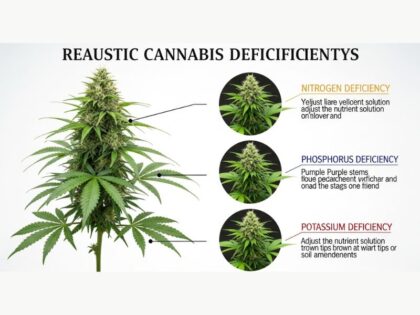
Proper nutrient management is the foundation of successful cannabis cultivation. By recognizing early deficiency symptoms and understanding the role of essential nutrients, growers can take timely action to support healthy growth, prevent stunted development, and maximize yields.
A well-balanced diet, optimal pH levels, and consistent monitoring ensure your cannabis plants stay strong, vibrant, and productive from seedling to harvest. Looking to prevent common grow issues? Stay informed with guides on nutrients, soil health, and plant care.
Frequently Asked Questions
What causes nutrient lockout in cannabis plants?
Nutrient lockout occurs when cannabis roots can’t absorb nutrients due to imbalanced pH, salt buildup, or chemical interactions in the growing medium. It can mimic deficiency symptoms even when nutrients are present.
Can overfeeding cause cannabis deficiencies?
Yes. Overfeeding can lead to nutrient imbalances or toxicity, which may inhibit the uptake of other essential elements, resulting in symptoms similar to deficiencies.
How often should I feed nutrients to cannabis plants?
Frequency depends on the growth stage and medium. In soil, feeding every 1–2 weeks may suffice, while hydroponic systems often require more frequent, diluted nutrient applications.
Are organic nutrients better for cannabis cultivation?
Organic nutrients improve soil health and microbial activity, which can enhance nutrient availability. However, synthetic nutrients offer faster results and precise control, making both viable depending on the grower’s goals.
Do autoflowering cannabis strains require different nutrient levels?
Yes. Autoflowers typically need lower nutrient concentrations, especially nitrogen, due to their shorter life cycle and smaller size compared to photoperiod strains.
How can I tell if symptoms are caused by pests or deficiencies?
Inspect closely: pest damage often shows bite marks, spots, or webbing, while deficiencies tend to present as uniform discoloration, chlorosis, or deformation without external traces. Use a magnifier if needed.
What role does water quality play in nutrient uptake?
Poor water quality, especially with high chlorine or heavy metals, can interfere with nutrient absorption. Using filtered or dechlorinated water helps maintain balanced nutrient uptake.
Related Posts
What is a Marijuana Grow Tent? 6 Benefits and Usage Tips
Weed Plant Stages: 5 Steps Towards Great Buds
How to Dry Weed: 2 Common Ways to Try At Home
CATEGORIES
Best Selling Seeds

